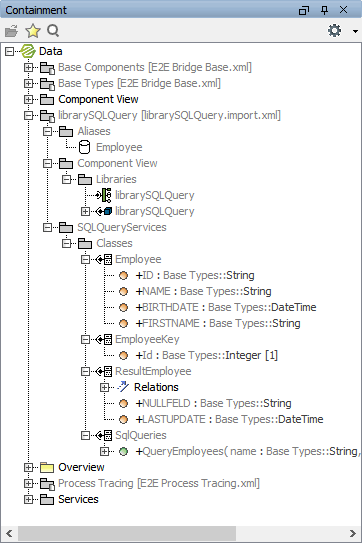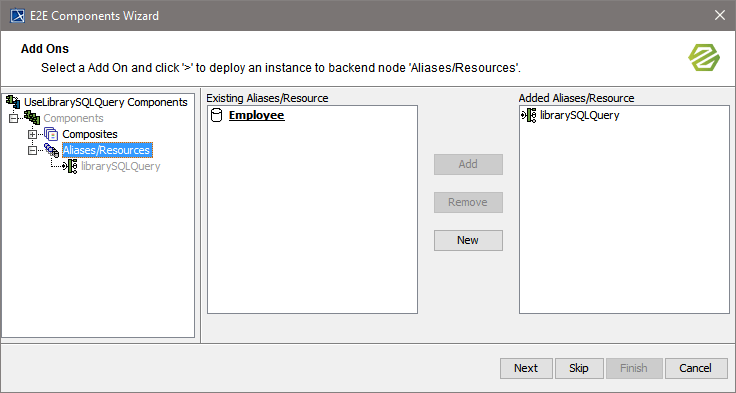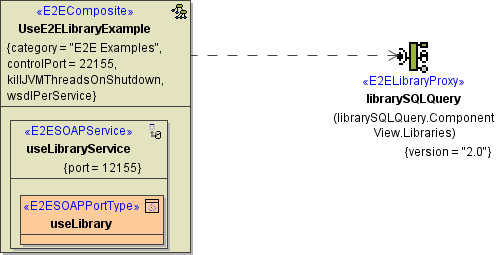To use the SQLQueryLibrary.lrep file in another UML model, it can be imported similar to all other external interfaces using the import dialog:
| The E2E Library Importer guides you through all needed steps. For more details, refer to Importing E2E Libraries. |
The importer creates a new model file in your current project in the folder ../uml/import' and links that file as a module into the target model. This module contains proxy elements for all classes, interfaces, signals and enumerations that are available in the repository. Additionally, it holds proxy components for the E2E library itself.
For example, importing the librarySQLQuery.lrep file leads to the following new objects in the containment tree of the target model, which are linked from the new file librarySQLQuery.import.xml:
Figure: Containment Tree Showing Imported Library
Figure: Usage of Imported Library
However, before you deploy your main model the first time you must tell the system to which composite the imported library shall be linked. This is done with the E2E Component Wizard in the component diagram of your main model. Go to the backend services and select one of the imported library artifacts. Then, the screen may look like this:
Figure: Linkage of Library to xUML Service
In the next step, you must define a dependency that links this artifact with the composite it is going to be linked to. After finishing this wizard, your new component diagram now looks like:
Figure: Component Diagram when using a E2ELibrary
After using the wizard you get a component representing the external service similar to the situation you get after importing a SOAP service.
Now you are ready to test your model.




